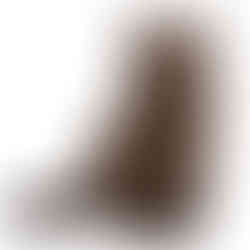The Genetics of Cat Colours and Coat Types: Unlocking the Mystery of Feline Fur (Part 1)
- Carolyn O'Brien
- Jun 14, 2024
- 3 min read
Updated: Jun 16, 2024
Ever wondered why your cat’s coat looks the way it does? From the sleek brown of a Burmese to the striking stripes of a tabby, a cat’s fur colour and texture are determined by a fascinating blend of genetics. Understanding the science behind these coat characteristics can help us appreciate the diversity and beauty of our feline friends.
The Basic Genetics of Feline Fur
The KIT gene is a part of the genetic code that influences the development of pigment cells, known as melanocytes. These cells are responsible for producing melanin, the pigment that gives colour to a cat's fur, skin, and eyes. Variations in the KIT gene and others can lead to different coat patterns and colours, making each cat unique.
There are two primary pigments in cats:
1. Eumelanin: This pigment produces black or brown colours.
2. Pheomelanin: This pigment is responsible for red or yellow hues.
The interaction between these pigments and various genetic factors results in the wide array of colors and patterns seen in cats.
Black (B/b/b') Gene: This gene determines the production of eumelanin. Cats with the dominant B allele will have black fur (B/b, B/b'), while those with a double copy of a recessive b or b' allele may have chocolate (b/b, b/b') or cinnamon-coloured (b'/b') fur.
Orange (O) Gene: The O gene determines whether a cat will have orange fur. It’s located on the X chromosome, which means male cats (with one X chromosome) will either be orange or not, while female cats (with two X chromosomes) can be orange, non-orange, or a mix (tortoiseshell).
Torties (also known as calico if they are tri-coloured and have orange, non-orange and white fur) are typically only female. Rarely , male tortoiseshell cats appear, but they are usually infertile due to their chromosomal abnormalities.
Dilution (D) Gene: This gene affects the intensity of the colour. The dominant D allele results in full-intensity colours, while the recessive d allele dilutes the colour, as these cats lack a protein called melanophilin, that is involved in the transportation and deposition of pigment into a growing hair. This turns black into gray (blue), chocolate into lilac, cinnamon into fawn and orange into cream.
Dominant white (WD) and White spotting (Ws) KIT variants: The WD gene can mask all other colours, resulting in a completely white cat. This gene can also be linked to deafness. Ws gene causes white spotting on a cat’s coat. The amount and distribution of white spotting can vary greatly, from nearly all-white fur to a few small spots.
Tabby Markings
Tabby markings come in four main patterns: classic, mackerel, spotted, and ticked. Each pattern is influenced by specific genes that determine the arrangement and appearance of the stripes, spots, or swirls on a cat’s coat.
The appearance of these tabby patterns is controlled by multiple genes. The primary genes involved are:
Agouti Gene (A): This gene determines whether a cat will have tabby markings at all. When the agouti gene is active (A), the cat will have a tabby pattern. When it is not active (a), the cat will be a solid colour.
Tabby Gene (T): This gene influences the type of tabby pattern a cat will have. There are several alleles (different versions of a gene) at this locus:
- Mc: Produces the mackerel tabby pattern.
- mc: Produces the classic tabby pattern.
- Sp: Responsible for the spotted tabby pattern, although this allele is less common and its interactions with other genes can vary.
Ticked Gene (Ta): This gene is responsible for the ticked tabby pattern. When present, it overrides other tabby patterns, resulting in a ticked appearance with a lack of distinct stripes or spots.
The Role of Modifier Genes
Modifier genes further influence the intensity and distribution of tabby markings. These genes can affect the width of stripes, the clarity of the pattern, and even the colouration. For instance, the wide-band gene can create the golden appearance seen in some tabbies, particularly in breeds like the Abyssinian.
In the next part of our series, we'll dive into the fascinating colouration of some cat breeds and how breeding has shaped the coats we admire today. Stay tuned for more insights into the wonderful genetics of feline fur!








































